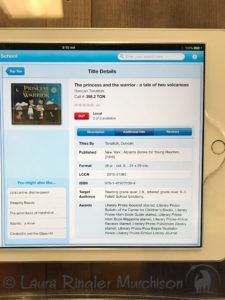
I have always loved libraries. In college I relished the feel of being surrounded by the hush and the smell of old tomes. One of my earliest memories is in elementary school when we were ushered into our library and introduced to the awe-inspiring card catalog. For those of you too young to know what that is it was back in the days before computers were prevalent in our every day lives. I can almost hear an audible gasp from somewhere. Anyway, it was this massive piece of furniture with tons of little square drawers. Inside the drawers were cards containing bibliographic information, including the title of the book, the author’s name, and approximate location on the library shelf. I did some research and discovered that around 1789 the French began collecting books from churches and decided to use them to build a system of public libraries, including creating an inventory of all books. The backs of playing cards were used to write each book’s information. Leave it to my beloved France! Around the mid-1800’s Melvil Dewey and other American librarians began to champion the card catalog because of its great expandability. In some libraries books were based on size or the author’s name. Dewy devised a decimal system where books were organized by subject and then alphabetized by the author’s name. Each book had a “call number” which identified the subject and the location. The decimal points divided different sections of the call number, which matched a number written on the spine of each book. I can remember the librarian telling us we would need to know this our entire lives. Since telling my six year old about it she has begun referring to everything in my childhood as “the olden days.” (I predict her mind will explode when I explain to her about corded phones.) Of course now libraries have replaced card catalogs with online public access which is digital. My shock came when the hubs and I attended our little one’s book fair at her school and I could not find a laptop or a desktop anywhere. Gaping like a slack jawed yokel, I stumbled into my discovery: iPads were affixed conveniently on pillars around the library. It is the first time I have actually felt old. Like a cat staring at a shiny object, I felt compelled to take this picture. I never could have forseen this day as I stood on that shag carpeting with my bell bottom jeans all those years ago. I can still remember the feel of back-breaking weight of all those heavy books crammed into my backpack. Now each child at her school has an iPad which contains them all. The Norwegian historian Christian Lous Lange once said, “Technology is a useful servant but a dangerous master.” I hope we never stop using actual books. It’s more than the rustle of a page or the creak of a spine but I cannot precisely put it into words. However I also love to read digitally and it is much better for the environment. It is also very convenient. At least people are still continuing to read; now it’s just a whole new world.
